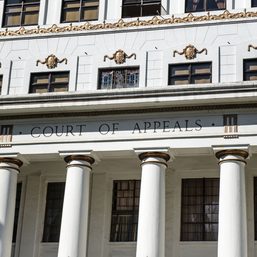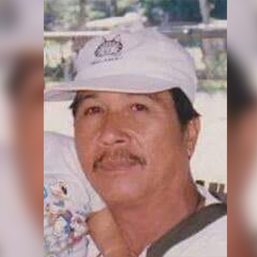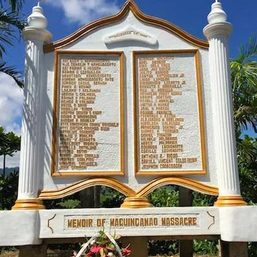SUMMARY
This is AI generated summarization, which may have errors. For context, always refer to the full article.

CEBU, Philippines – It was morning when the news exploded about the November 23, 2009 Ampatuan massacre in the old and now-defunct Maguindanao province.
Cebu-based journalist June Perez, news editor of ABS-CBN’s DYAB Radyo Patrol at the time, was monitoring sketchy reports about the slaughter in Ampatuan town.
Normally, major media networks would leave the reportage of killings in other provinces to their local counterparts, but not this one.
“When they said it was a massacre, that’s when we knew it was going to be big. We couldn’t look away,” Perez told Rappler on Wednesday, November 22.
It was an election period in 2009, and things were starting to heat up, Perez said.
The vice mayor of Buluan town at that time, Esmael Mangudadatu, was challenging the then Datu Unsay town mayor, Andal Ampatuan Jr., in Maguindanao’s gubernatorial race.
Ampatuan’s father, Andal Sr., was Maguindanao’s governor and the head of the local political dynasty.
Mangudadatu, who had received death threats, sent his wife, sisters, lawyers, and aides to Shariff Aguak town where his certificate of candidacy (COC) would have been filed that day at the Commission on Elections (Comelec) provincial office.
With the 58-person group were 32 media workers who were covering the story.
The convoy was on its way to its destination when, out of nowhere, they were stopped by armed men.
The whole nation would soon hear reports of 58 people being killed, buried in shallow graves dug by a backhoe inscribed with the name of Maguindanao Governor Andal Ampatuan Sr.
A shiver went through Perez’s body when he heard how the victims were taken by force, how women were raped, and how graves were dug days before the tragic event, indicating that the massacre was planned.
Perez summarized the whole thing in a single Cebuano word: “Kuyaw” (dreadful).
‘It changed us’
The weekend after the killing, Perez said, members of the Kapisanan ng mga Brodkaster ng Pilipinas (KBP) in Cebu held an indignation rally along the Fuente Osmeña Circle and were joined by local militant groups who were all calling for justice for the deaths of the journalists.
He described it as a solemn event where they held silent prayers condemning the events of November 23, 2009.
In the months that followed, Perez noted changes in the newsrooms and in his fellow journalists, not just in Cebu, but also those from Eastern and Western Visayas.
According to him, many news outlets crafted new safety protocols as a result.
He said journalists became reluctant to go on high-risk coverages similar to that of Maguindanao’s, and if they did, they wore bulletproof vests.
Perez said that back then, it seemed to him that it was more important for journalists to cover stories than worry about the danger of the coverage.
“I realized later on how dangerous it was. Mura man og ga-una man ko sa kamatayan (I felt like I jumped ahead of death, itself),” Perez said.
Perez recalled that even their interns at that time were traumatized by the massacre, casting doubt on their career choice.
He said he was reminded that “no story is worth dying for, and that they should not play hero.”
Exactly a year after the Ampatuan massacre, the 1st Media Conference on the Protection of Journalists adopted the “Cebu Declaration.” It enumerated 11 points on the protection of journalists and the development of media in the community.
“The state, being primarily responsible for the safety of all citizens, including the news media, should immediately act to end the culture of impunity,” the 11th point of the Cebu Declaration read.
Fighting impunity
The Committee to Protect Journalists (CPJ) said the Ampatuan massacre was the single deadliest event for the press since 1992.
For lawyer Pachico Seares, the executive director of the Cebu Citizens Press Council (CCPC), the trial that followed the massacre demonstrated how impunity had gone unchecked in many areas of the country.
Seares has called out the stalling of the Ampatuan case in courts since 2010.
“The justice system clearly wasn’t prepared for dealing with this kind of a crime: a massacre with multiple victims and accused and hundreds of witnesses,” Seares wrote in his SunStar Cebu article on November 21, 2014.
On December 11, 2014, the CCPC led by Seares approved a resolution encouraging the community press to help curb impunity through vigilance.
The resolution identified two major factors that contribute to the nurturing of impunity: (1) flaws in the justice system, and (2) weak law enforcement that fails to solve crime.
The resolution also urged law groups to initiate moves to minimize delays in trials by strengthening court procedures and cooperating with judges on cases.
In the resolution, the CCPC encouraged the community press in Cebu and other areas where assaults against media workers have not been as flagrant or violent “to be watchful over developments that could lead to impunity, by exposing through stories and commentaries any attempt to frustrate law enforcement or corrupt law enforcers, prosecutors and judges, and inspiring moves to strengthen the pillars of the justice system.” – Rappler.com
Add a comment
How does this make you feel?












![[Just Saying] Ted Failon, press freedom, and the Supreme Court](https://www.rappler.com/tachyon/2024/07/20240709-ted-failon-press-freedom-supreme-court.jpg?resize=257%2C257&crop=296px%2C0px%2C720px%2C720px)

There are no comments yet. Add your comment to start the conversation.